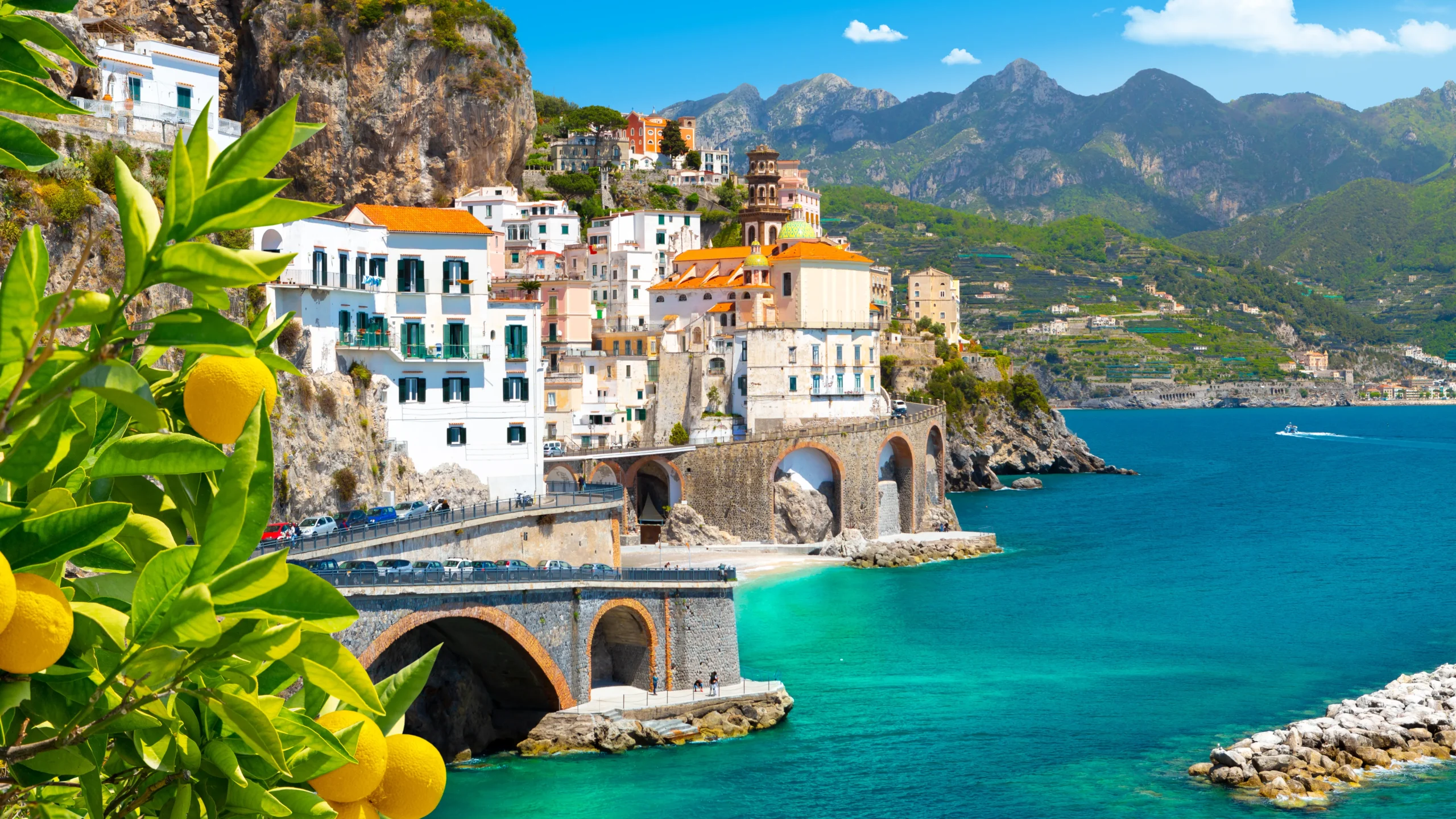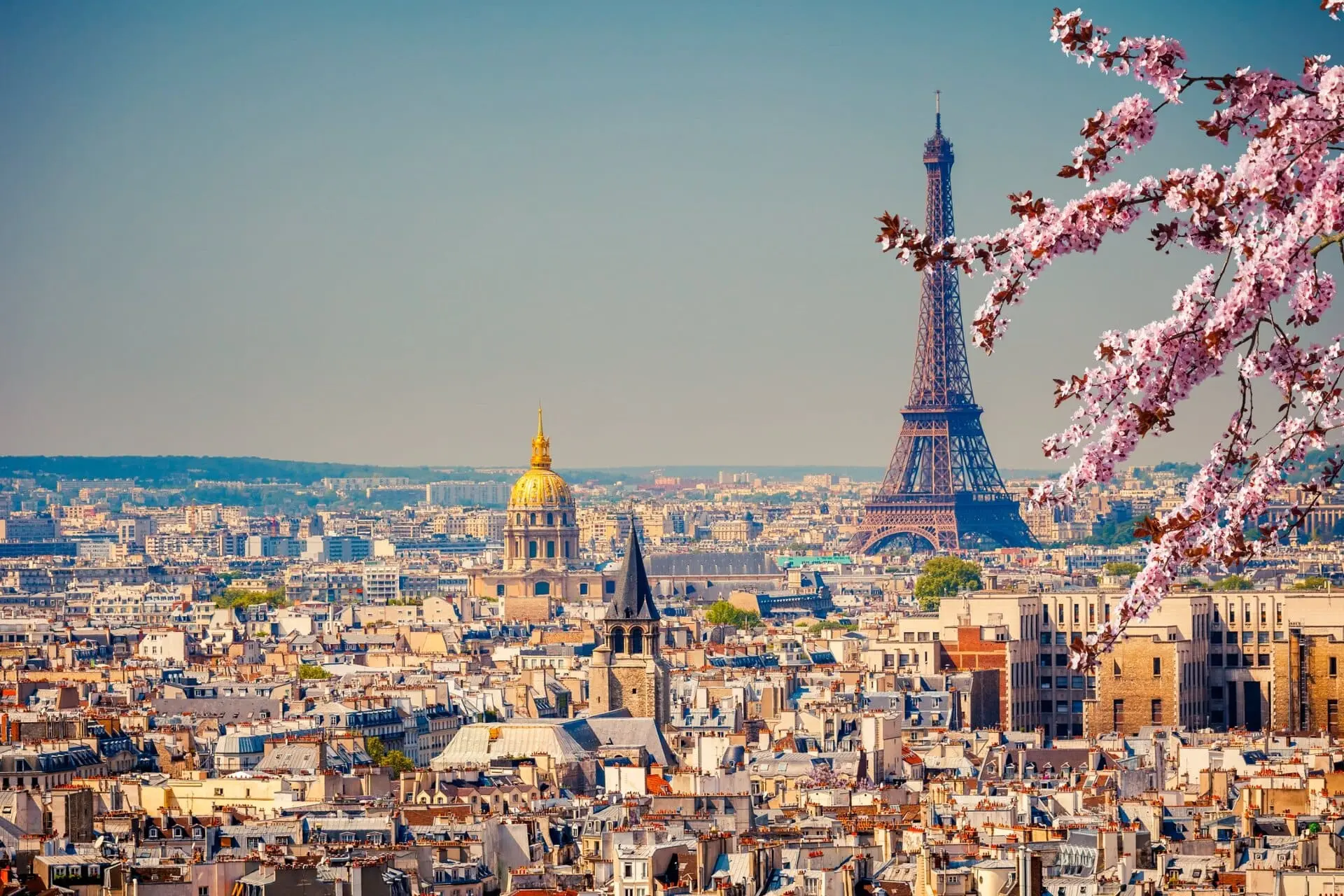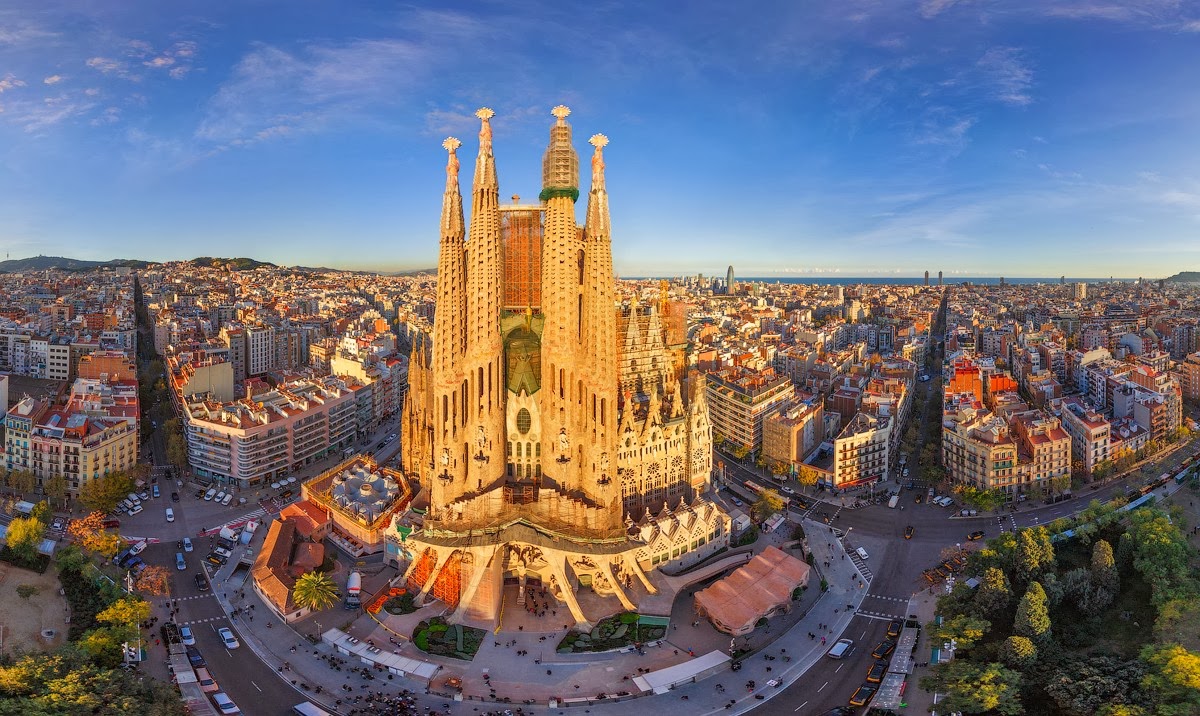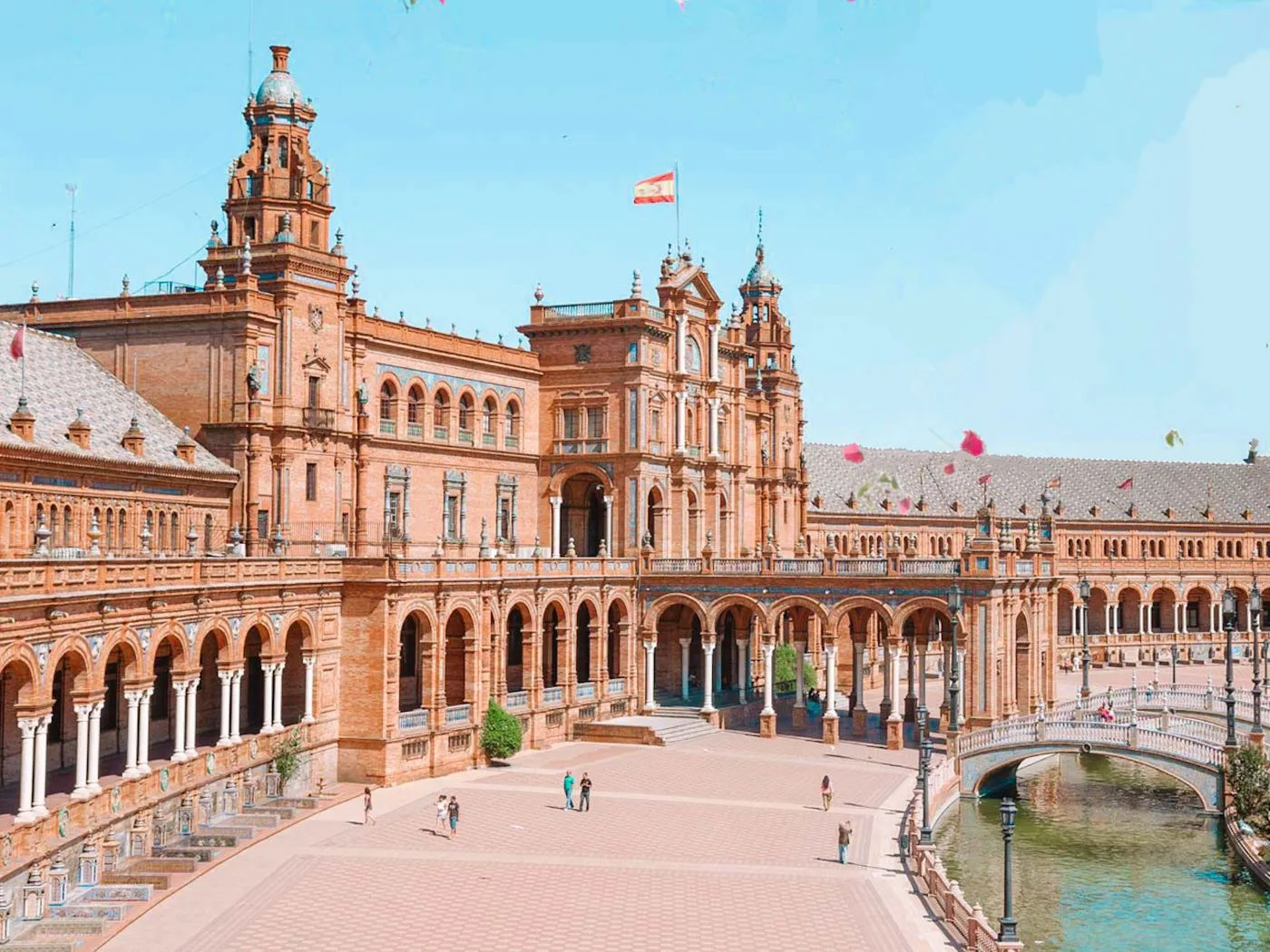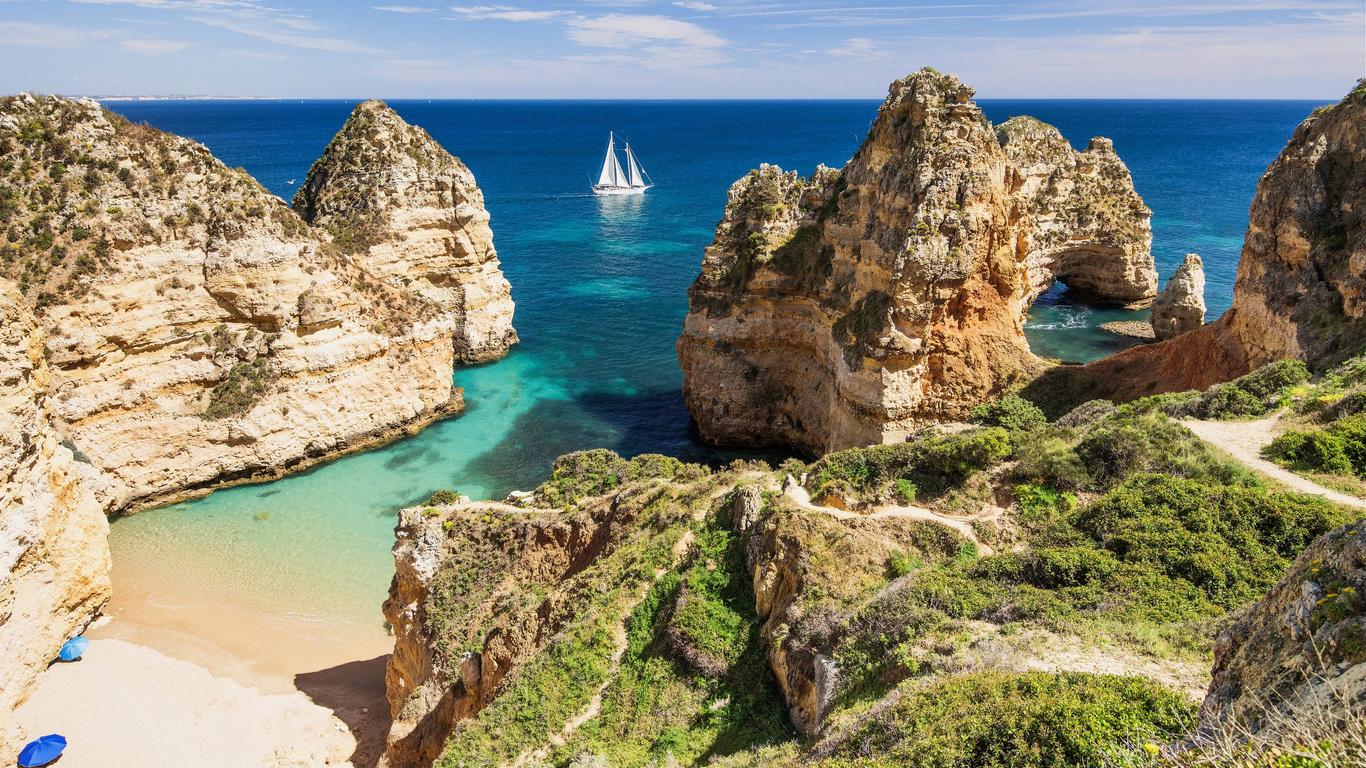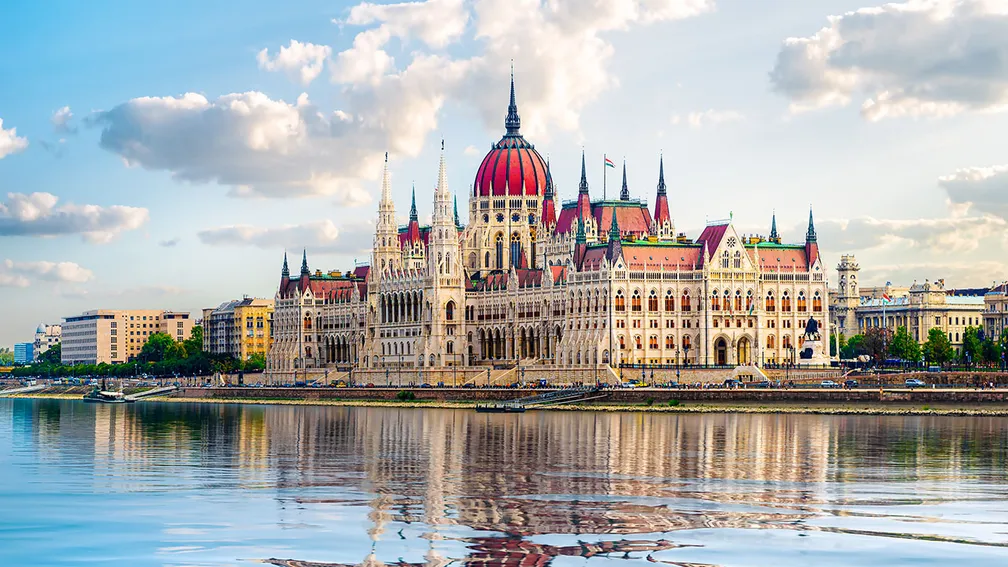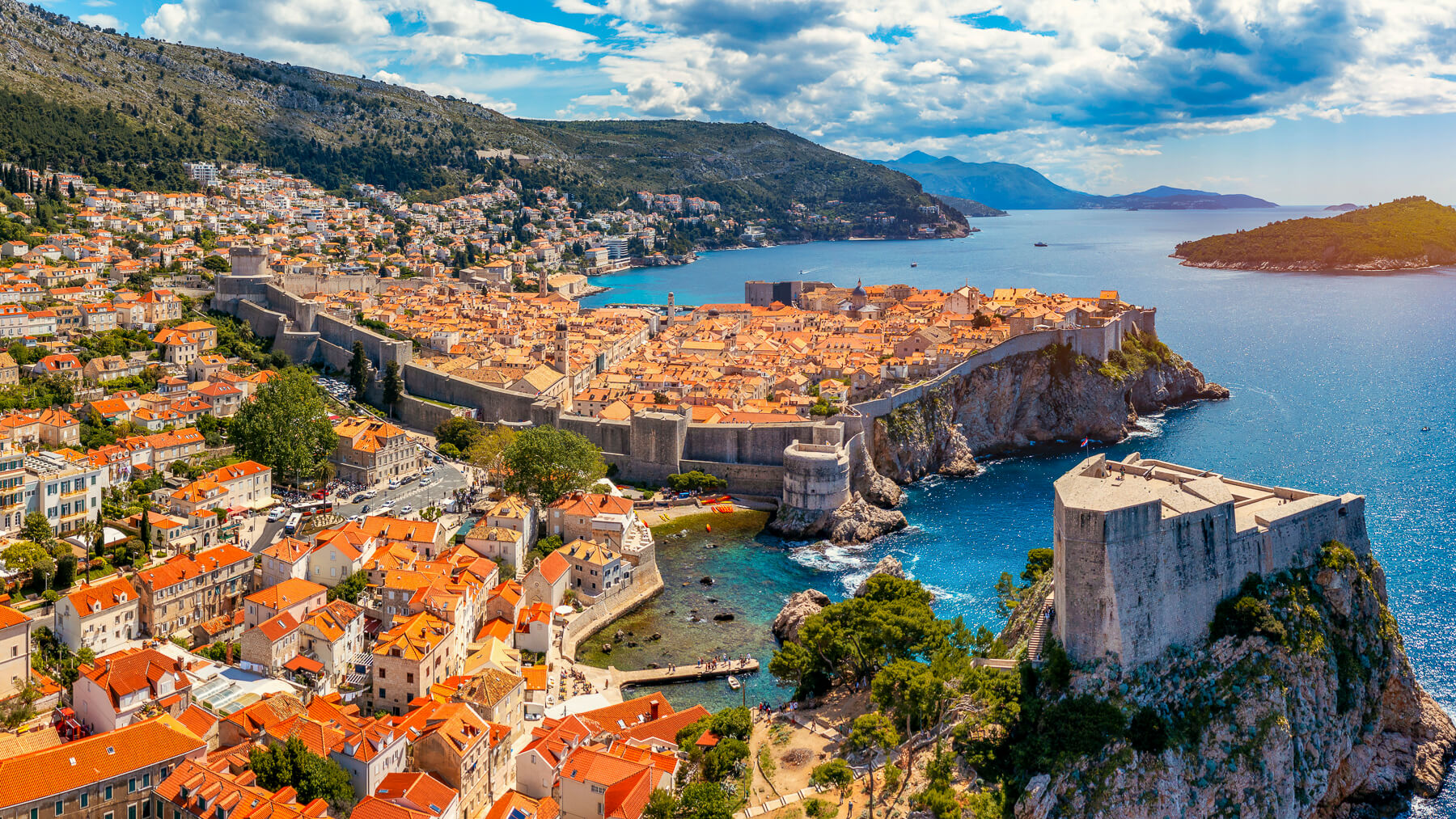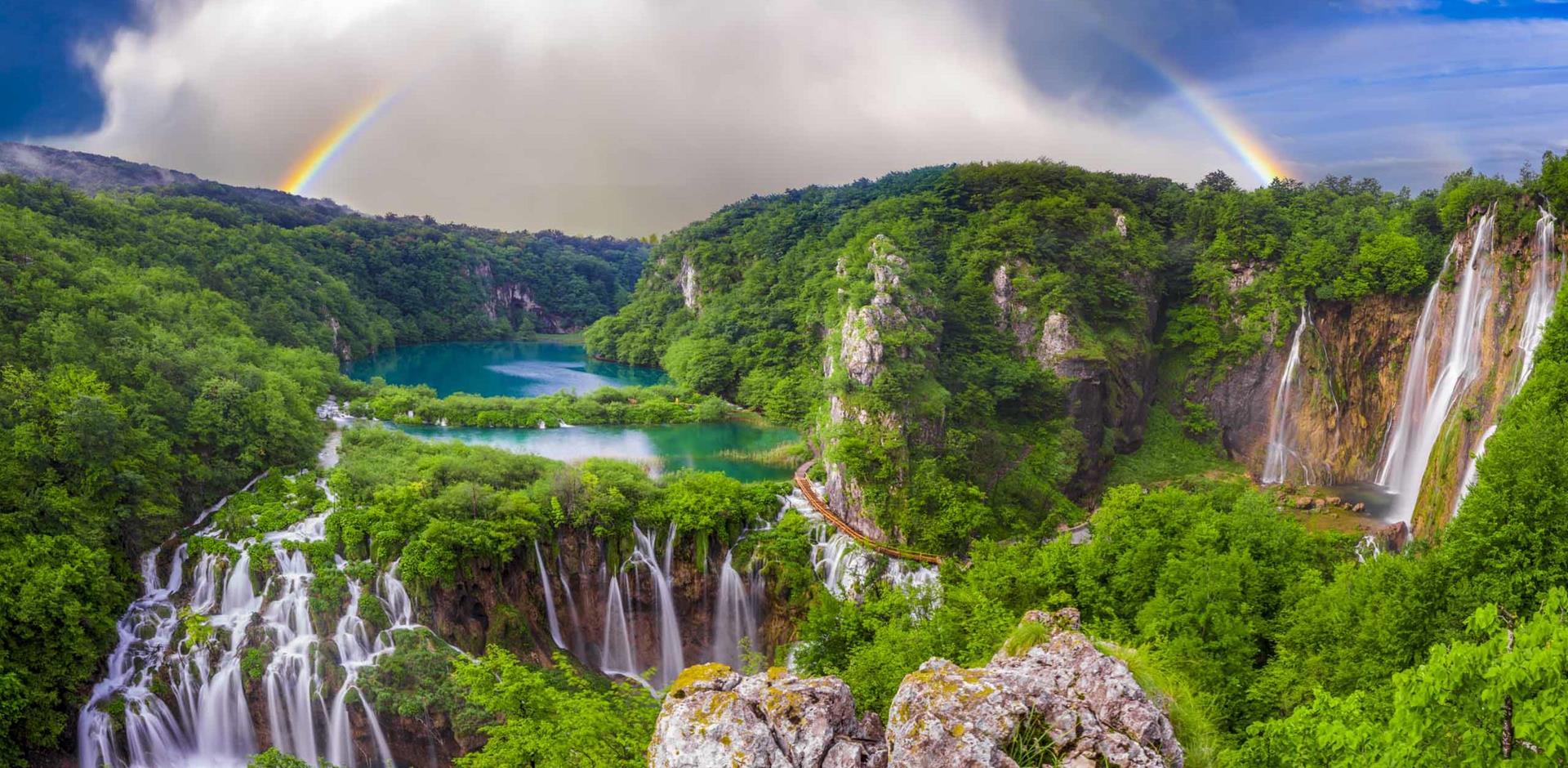Europe is one of the most exciting travel destinations in the world. It is famous for its incredible diversity. Each country has a mix of cultures. history and breathtaking scenery Make it a top choice for travelers. From the charming streets of Paris, France to the picturesque canals of Venice, Italy, Europe is a continent where you can indulge in a wide variety of experiences. The must visit countries in Europe not only showcase iconic landmarks but also invite you to explore local traditions and cuisines.
Choosing the right country to visit in Europe is essential to creating unforgettable memories. With many options Tourists may feel overwhelmed. But choosing the right location can improve your trip. France, for example, has a mix of romance and history. while Italy caters to art lovers and foodies. With a focus on these must-visit countries You can be sure of a well-rounded travel experience that highlights Europe’s diverse offer.
In this guide, we’ll delve into Must visit countries in Europe. We’ll explore famous destinations like France and Italy where you can marvel at historical sites and eat delicious food. We’ll also discover Hidden gems like Portugal and Hungary It’s known for its breathtaking scenery and vibrant culture. Finally, we’ll highlight unique experiences in countries like Norway and Greece. Where natural beauty meets rich history. Whether you are looking for adventure, culture or fine dining. Europe has something for everyone. Let’s start this exciting journey through Europe’s must-have countries!
Must Visit Countries in Europe you can’t Miss
1.France
France is one of the most iconic and beloved countries in Europe, known for its rich history, stunning landscapes, and vibrant culture. Whether you’re wandering through the streets of Paris or exploring the sun-soaked vineyards of Provence, France offers a wide array of attractions that cater to every type of traveler.
Overview of Attractions
Paris
Paris, capital of France Often called The “City of Lights” has world-famous landmarks. Charming neighborhood and a rich artistic heritage
The main attractions are:
Eiffel Tower: No visit to Paris is complete without visiting the Eiffel Tower. Standing at a height of 1,083 feet, the lattice steel tower offers stunning views of the city from its observation deck. It is especially beautiful at night as it sparkles every hour.
Louvre Museum: As the largest art museum in the world The Louvre is home to thousands of works, including the Mona Lisa and Venus de Milo. The entrance to the glass pyramid combines historical beauty. and became a symbol of modern architecture.
Notre Dame Cathedral: Although currently undergoing restoration, this Gothic masterpiece is a must-see for its intricate architecture and historical significance. Visitors can also admire the great outdoors and explore the surrounding Île de la Cité.
Provence
Beyond Paris, the area of Provence is renowned for its picturesque landscapes, lavender fields, and fascinating villages. The place is thought for:
Lavender Fields: In summer, the fields burst into colorful purple, growing lovely vistas that entice photographers and nature fanatics alike. The pleasant time to peer the lavender in complete bloom is generally from past due June to mid-August.
The Calanques: This collection of rocky inlets alongside the Mediterranean coast gives stunning trekking trails and crystal-clean waters, perfect for swimming and kayaking.
Charming Villages: Places like Gordes and Roussillon are well-known for his or her lovely structure and colourful colors, making them ideal for leisurely strolls and exploring nearby markets.
Cultural Experiences
France isn’t pretty much breathtaking sights; it`s additionally a hub of wealthy cultural experiences.
Art
French art has a profound affect on worldwide culture. Beyond the Louvre, artwork fanatics can discover:
Musee d’Orsay: Housed in a former railway station, this museum capabilities an outstanding series of Impressionist and Post-Impressionist masterpieces.
Montmartre: This historic district is thought for its bohemian vibe and as the house of many well-known artists, which include Picasso and Van Gogh. Visitors can discover the inventive records and go to the Basilica of Sacré-Cœur for panoramic perspectives of Paris.
Cuisine
French delicacies is famed worldwide, and experiencing it firsthand is a must.
Culinary Delights: From flaky croissants at a nearby boulangerie to pleasant eating at Michelin-starred restaurants, France gives a culinary adventure. Don’t omit attempting conventional dishes like coq au vin or ratatouille.
Wine Regions: France is domestic to numerous well-known wine regions, which include Bordeaux, Burgundy, and Champagne. Wine tasting excursions permit site visitors to pattern a number of the pleasant wines withinside the global and find out about the winemaking process.
Best Time to Visit
The best time to visit France largely depends on what you want to experience:
- Spring (March to June): Spring is a fantastic time to visit, as the weather is mild and flowers bloom, making places like Paris and Provence particularly beautiful.
- Summer (June to August): Summer is peak tourist season, especially in Paris and along the Mediterranean coast. It’s perfect for enjoying outdoor cafés and festivals, but be prepared for larger crowds.
2.Italy
Italy is a fascinating country that represents a combination of rich history, stunning art, and breathtaking landscapes. From ancient ruins to vibrant cities, Italy is a treasure trove for travelers in search of cultural richness and unforgettable experiences. Key highlights include the iconic cities of Rome, Venice, and Florence, each offering its unique charm and historical significance.
Highlights
Rome
Rome, the capital of Italy, is often referred to as the “Eternal City. ” It is rich in history and presents a remarkable array of attractions that reflect its ancient heritage.
The Colosseum: This iconic symbol of Rome is an ancient amphitheater that once hosted gladiatorial contests and public spectacles. A visit to the Colosseum enables you to step back in time and envision the splendor of the Roman Empire.
Vatican City: As the residence of the pope, Vatican City is an independent state located within Rome. Visitors gather to see St. St. Peter’s Basilica, celebrated for its impressive architecture and Michelangelo’s iconic dome. The Vatican Museums, which include the Sistine Chapel, are also essential for their artistic treasures.
The Roman Forum: Formerly the center of public life in ancient Rome, the forum is an extensive area of ruins that offers insight into Roman civilization. As you stroll through the forum, remnants of temples, government buildings, and marketplaces become visible.
French cuisine is celebrated globally, making firsthand experience essential.
Culinary delights range from flaky croissants at local boulangeries to exquisite dining at Michelin-starred establishments, offering a gastronomic adventure in France. Don’t miss the opportunity to try classic dishes such as coq au vin or ratatouille.
wine regions: France boasts several renowned wine regions, including Bordeaux, Burgundy, and Champagne. Wine tasting tours provide visitors the opportunity to sample some of the finest wines globally and gain insight into the winemaking process.
Venice
Venice, frequently referred to as the “city of canals,” is a distinctive city constructed on water. Its appeal is found in its winding canals, historic architecture, and vibrant culture.
St. Mark’s Basilica: This impressive cathedral is renowned for its elaborate design and golden mosaics. St. Mark’s Square, home to the basilica, serves as a lively center of activity and an ideal location to savor a coffee.
The Grand Canal: as Venice’s primary waterway, the Grand Canal is flanked by stunning palaces and provides a scenic view of the city. A gondola ride or a vaporetto (water bus) offers a delightful way to explore this iconic attraction.
Rialto Bridge: This renowned bridge spans the Grand Canal and is an architectural marvel. The vicinity of the Rialto is lively with shops and markets, offering an excellent opportunity to experience local life.
Florence
Florence is frequently regarded as the cradle of the Renaissance and is abundant in art and history.
The Uffizi Gallery: As the home to some of the world’s most important works of art, the Uffizi Gallery showcases masterpieces by artists such as Botticelli, Michelangelo, and Leonardo da Vinci. It is an essential destination for art enthusiasts aiming to discover Italy’s artistic heritage.
The Florence Cathedral (Duomo): the cathedral is renowned for its magnificent dome designed by Brunelleschi. Reaching the summit offers stunning vistas of the city, making it a fulfilling experience.
Ponte Vecchio: This iconic bridge is adorned with shops and is among the most photographed locations in Florence. It offers a delightful ambiance, ideal for a relaxed walk.
Historical importance and artistic heritage
The historical significance of Italy is immense. As the birthplace of the Roman Empire and the Renaissance, it has been instrumental in shaping Western civilization. The ancient ruins in Rome, the artistic masterpieces in Florence, and the architectural wonders in Venice all embody this rich heritage.
Best Time to Visit
The best time to visit Italy depends on your preferences, but here are some key considerations:
- Spring (March to June): Spring is one of the best times to visit Italy, as the weather is mild and pleasant. This season is perfect for exploring Rome, Florence, and Venice, with fewer tourists compared to the summer months.
- Summer (June to August): Summer brings warm weather and vibrant festivals, but it can also mean larger crowds, especially in popular cities. Coastal areas and the Amalfi Coast are perfect for enjoying the sun during this time.
3.Spain
Spain is a vibrant and diverse country that captivates travelers with its rich history, stunning architecture, and lively culture. Known for its passionate spirit and warm hospitality, Spain offers a wide range of experiences, from the bustling streets of Barcelona to the historical sites in Seville. With must-see cities like Barcelona, Madrid, and Seville, Spain is a treasure trove of attractions and unique cultural aspects.
Must-See Cities
Barcelona
Barcelona, the capital of Catalonia, is renowned for its distinctive architecture and vibrant atmosphere.
sagrada família: This iconic basilica, designed by Antoni Gaudi, stands as one of the most recognizable landmarks in Barcelona. Its detailed facades and soaring spires establish it as an essential destination. The interior, adorned with vibrant stained glass, offers a magnificent experience.
Park Güell: another remarkable work by Gaudí, this colorful park features imaginative structures, striking mosaics, and breathtaking views of the city. It is an ideal location to unwind and enjoy Barcelona’s artistic charm.
La Rambla: this vibrant street is renowned for its shops, cafés, and street performers. Strolling along La Rambla provides a glimpse into Barcelona’s vibrant culture and is an ideal way to experience local life.
Madrid
Madrid As the capital city of Spain, Madrid is renowned for its rich cultural heritage and dynamic atmosphere.
Prado Museum: Recognized as one of the most significant art museums globally, the Prado Museum features an impressive collection of European art, including masterpieces by Velázquez, Goya, and Bosch. Art enthusiasts will consider this museum an essential destination in Madrid.
Royal Palace of Madrid: This stunning palace serves as the official residence of the Spanish royal family. Visitors can discover its luxurious rooms, exquisite gardens, and remarkable architecture, making it a prominent feature of any trip to Madrid.
Retiro Park: a green sanctuary in the city’s core, Retiro Park is ideal for a relaxing walk, a picnic, or boating on its tranquil lake. It is a favored location for both locals and visitors to relax and appreciate nature.
Seville
Seville, the capital of Andalusia, is celebrated for its extensive Moorish history and lively culture.
Seville Cathedral and La Giralda: This UNESCO World Heritage Site is among the largest cathedrals globally. The remarkable Gothic architecture and the adjacent bell tower, La Giralda, render it an essential attraction.
Alcázar of Seville: This exquisite palace complex features a blend of Islamic, Gothic, and Renaissance architectural styles. The lush gardens and intricate designs offer insight into the region’s rich history.
Metropol Parasol: referred to as “Las Setas,” this modern architectural marvel provides panoramic views of Seville from its walkway. It provides a striking contrast to the historic buildings that envelop it.
Unique Cultural Aspects
Spain’s cultural richness is evident in its unique traditions and lively customs.
Festivals
Spain is home to many vibrant festivals celebrated throughout the year. Notable examples include:
- La Tomatina: Held in Bunol, this famous tomato-throwing festival attracts thousands of participants and is a fun and messy celebration of summer.
- Running of the Bulls: The San Fermín festival in Pamplona features the famous running of the bulls, a thrilling tradition that draws visitors from around the world.
- Semana Santa: Holy Week celebrations, particularly in Seville, are known for their elaborate processions and traditional music. This deeply rooted religious festival showcases the country’s cultural heritage.
Best Time to Visit
The best time to visit Spain varies by region and personal preferences, but here are some key considerations:
- Spring (March to June): Spring is one of the best times to explore Spain, with mild temperatures and blooming flowers. Major cities like Barcelona, Madrid, and Seville are especially enjoyable during this season.
- Summer (June to August): Summer is peak tourist season, particularly in coastal areas like Costa del Sol and Barcelona. While the weather is hot, it’s also lively with festivals and outdoor activities. Just be prepared for larger crowds.
- Fall (September to November): Fall is another excellent time to visit, as the weather remains pleasant, and the tourist crowds begin to thin. This is also harvest season, making it a great time for wine enthusiasts to explore regions like La Rioja. It is one of the Best countries to visit in November.
Hidden Gems of European Country
4.Portugal
Portugal is a captivating destination known for its stunning landscapes, rich history, and vibrant culture. From the charming streets of Lisbon to the picturesque riverside of Porto, Portugal offers travelers an array of experiences that highlight its unique heritage. With beautiful coastlines in the Algarve and a rich culinary scene, it’s a country that invites exploration and discovery.
Overview of Lisbon and Porto
Lisbon
 Lisbon, the capital city of Portugal, is a vibrant city built on seven hills overlooking the Tagus River. Known for its colorful neighborhoods and historic sites, Lisbon is a must-visit destination.
Lisbon, the capital city of Portugal, is a vibrant city built on seven hills overlooking the Tagus River. Known for its colorful neighborhoods and historic sites, Lisbon is a must-visit destination.
- Belém Tower: This UNESCO World Heritage site is an iconic symbol of Lisbon. The tower, built in the early 16th century, served as a fortress and a gateway for explorers. Visitors can climb to the top for stunning views of the river and the surrounding area.
- Jerónimos Monastery: Another UNESCO site, this monastery is a masterpiece of Manueline architecture. Its intricate carvings and beautiful cloisters showcase the wealth and power of Portugal during the Age of Discoveries.
- Alfama District: The oldest neighborhood in Lisbon, Alfama is characterized by narrow streets, colorful buildings, and vibrant Fado music. Strolling through Alfama allows visitors to soak in the city’s history and charm.
Porto
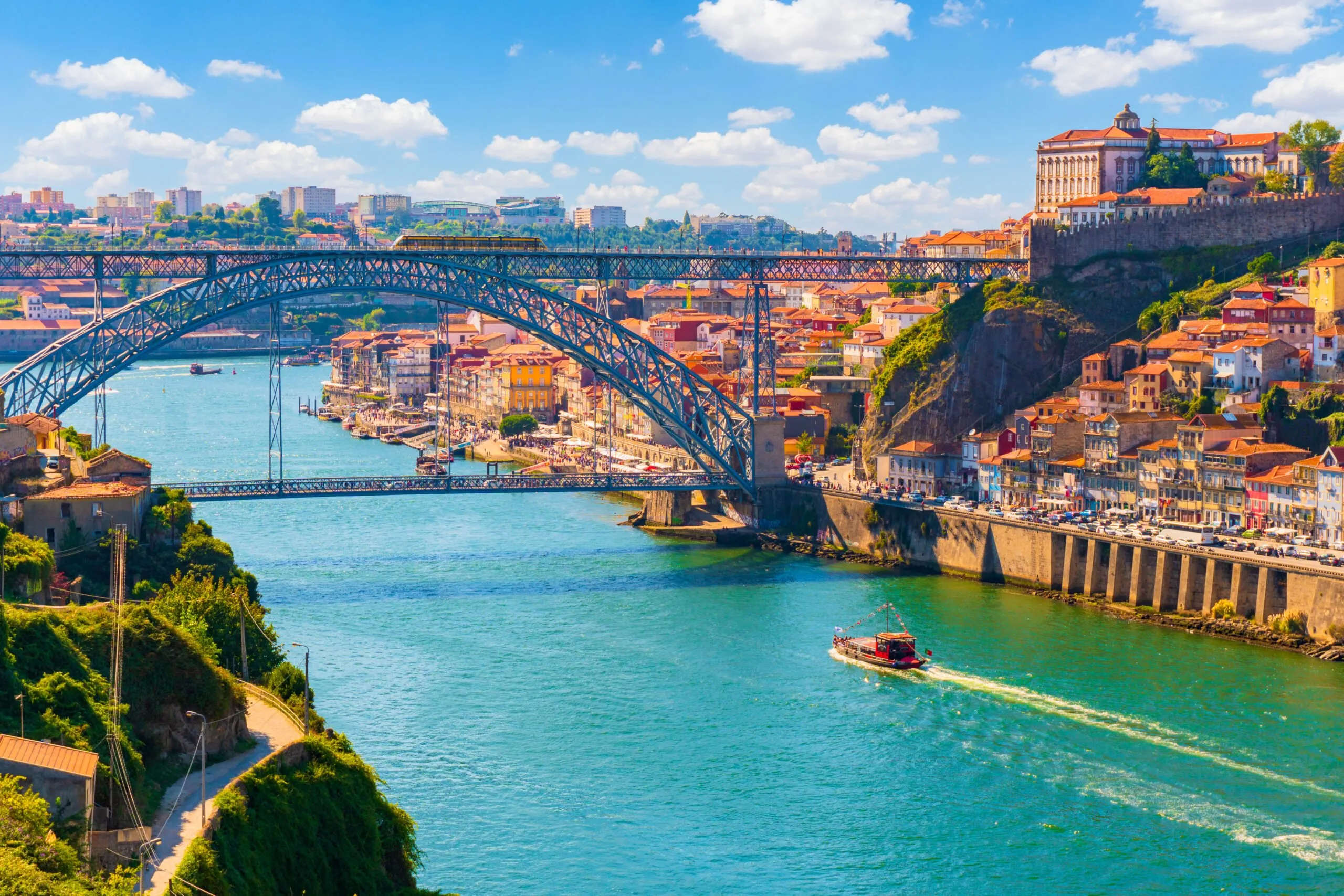 Porto, Portugal’s second-largest city, is known for its historic architecture and its famous wine. The city’s riverside area is a UNESCO World Heritage site and offers a unique blend of culture and scenery.
Porto, Portugal’s second-largest city, is known for its historic architecture and its famous wine. The city’s riverside area is a UNESCO World Heritage site and offers a unique blend of culture and scenery.
- Dom Luís I Bridge: This iconic double-deck metal arch bridge spans the Douro River and connects Porto to Vila Nova de Gaia. Walking across the bridge provides stunning views of the river and the city’s skyline.
- Ribeira District: This lively waterfront area is filled with colorful houses, restaurants, and cafés. It’s a great place to enjoy the local atmosphere, indulge in Portuguese cuisine, and admire the riverside views.
- Port Wine Cellars: Porto is famous for its port wine, and a visit wouldn’t be complete without touring the wine cellars in Vila Nova de Gaia. Many cellars offer tastings and insights into the port wine production process.
Beautiful Coastlines (Algarve) and Local Cuisine
Algarve
The Algarve, located in the southern region of Portugal, is known for its stunning coastline, picturesque beaches, and charming towns.
- Ponta da Piedade: This natural wonder near Lagos features dramatic cliffs, sea caves, and crystal-clear waters. It’s perfect for boat tours, kayaking, or simply enjoying the breathtaking views.
- Praia da Marinha: Often cited as one of the most beautiful beaches in the world, Praia da Marinha boasts golden sands and stunning rock formations. It’s an ideal spot for sunbathing and swimming.
- Albufeira: Known for its lively atmosphere, Albufeira offers beautiful beaches and vibrant nightlife. The town is a popular destination for both relaxation and entertainment.
Local Cuisine
Portugal’s cuisine is a delightful blend of flavors influenced by its maritime history and regional ingredients.
- Bacalhau à Brás: This traditional dish features salted cod, onions, and potatoes, all mixed with scrambled eggs and garnished with olives. Bacalhau, or cod, is a staple in Portuguese cuisine, with countless recipes dedicated to it.
- Pastéis de Nata: These iconic custard tarts are a must-try when visiting Portugal. With a flaky crust and creamy filling, they are best enjoyed warm, often sprinkled with cinnamon and powdered sugar.
5.Hungary
Hungary is a captivating country known for its rich history, stunning architecture, and vibrant culture. The capital city, Budapest, is often referred to as the “Pearl of the Danube” and is a treasure trove of attractions that reflect Hungary’s unique heritage. From historical sites to relaxing thermal baths, Hungary offers a variety of experiences for every traveler.
Attractions in Budapest
Budapest
Budapest, the capital city of Hungary, is divided by The Danube River into two parts: Buda and Pest. Each side offers unique attractions and experiences.
- Buda Castle: This historic castle complex sits atop Castle Hill and provides stunning views of the city. It houses the Hungarian National Gallery and the Budapest History Museum, making it a key attraction for those interested in Hungary’s art and history.
- Fisherman’s Bastion: Located near Buda Castle, this neo-Romanesque terrace offers some of the best panoramic views of Budapest. Its whimsical turrets and statues are perfect for photography and enjoying the scenic beauty of the city.
- St. Stephen’s Basilica: This grand basilica is one of the most important religious buildings in Hungary. Visitors can climb to the observation dome for breathtaking views of the city, making it a must-visit attraction in Budapest.
Thermal Baths and Historical Sites
Hungary is famous for its thermal baths, thanks to its geothermal springs. Relaxing in these baths is an essential part of the Hungarian experience.
- Széchenyi Thermal Bath: One of the largest and most famous thermal baths in Europe, Széchenyi is located in City Park. Its outdoor and indoor pools, saunas, and steam rooms offer a luxurious way to unwind while experiencing traditional Hungarian bathing culture.
- Gellért Baths: Situated in the stunning Gellért Hotel, these thermal baths feature beautiful Art Nouveau architecture. The baths have both indoor and outdoor pools, providing a relaxing escape with a historical backdrop.
In addition to its baths, Budapest is rich in historical sites. The Hungarian Parliament Building is an architectural marvel and one of the largest parliament buildings in the world. A guided tour allows visitors to explore its stunning interior, including the Crown Jewels of Hungary.
Best Time to Visit Hungary
The best time to visit Hungary, particularly Budapest, varies by preference:
- Spring (March to May): Spring is an excellent time to explore Budapest, as the weather is mild and flowers are in bloom. This season is ideal for sightseeing and enjoying outdoor activities, including visits to the thermal baths.
- Fall (September to November): Fall offers pleasant weather and beautiful autumn foliage, making it another great time to visit. The crowds are smaller, allowing for a more relaxed experience while exploring historical sites and enjoying thermal baths.
6.Croatia
Croatia is renowned for its stunning coastline, picturesque cities, and beautiful national parks. The country offers a perfect blend of history, culture, and outdoor adventure, making it a top destination for travelers.
Coastal Cities (Dubrovnik, Split)
Dubrovnik
Dubrovnik, often called the “Pearl of the Adriatic,” is famous for its well-preserved medieval architecture and stunning coastal views.
- Old Town: A UNESCO World Heritage site, Dubrovnik’s Old Town is surrounded by impressive city walls. Visitors can explore historic sites like the Rector’s Palace, the Sponza Palace, and the iconic Stradun Street, which is lined with shops and cafés.
- City Walls: Walking along the ancient city walls offers breathtaking views of the Adriatic Sea and the red-roofed buildings of the Old Town. This experience is a must for anyone visiting Dubrovnik.
Split
Split is the largest city in Dalmatia and is known for its vibrant atmosphere and historical significance.
- Diocletian’s Palace: This UNESCO World Heritage site is the centerpiece of Split. Built by the Roman Emperor Diocletian in the 4th century, the palace is a complex of ancient ruins, shops, and restaurants, making it a lively hub for tourists.
- Riva Promenade: This bustling waterfront promenade is perfect for a leisurely stroll, dining, or enjoying a coffee while soaking in the views of the harbor and nearby islands.
National Parks and Outdoor Activities
Croatia is also home to stunning national parks that offer incredible opportunities for outdoor activities.
- Plitvice Lakes National Park: This UNESCO World Heritage site is famous for its cascading lakes and vibrant turquoise waters. Visitors can explore well-marked hiking trails and wooden boardwalks, making it a paradise for nature lovers and photographers.
- Krka National Park: Known for its stunning waterfalls, Krka National Park offers swimming opportunities in designated areas, making it a popular spot during the summer months. The park is also home to diverse wildlife and beautiful hiking trails.
- Outdoor Activities: Croatia’s beautiful coastline provides ample opportunities for outdoor activities such as sailing, kayaking, and snorkeling. The Adriatic Sea is known for its clear waters and rich marine life, making it ideal for water sports enthusiasts.
Best Time to Visit Croatia
The best time to visit Croatia varies by region and activities:
- Spring (April to June): Spring is a wonderful time to visit, as the weather is pleasant and the landscapes are lush. This season is ideal for exploring cities like Dubrovnik and Split, as well as national parks.
- Summer (July to August): Summer is peak tourist season, especially along the Dalmatian coast. While the weather is hot and sunny, expect larger crowds at popular destinations and beaches.
- Fall (September to October): Fall offers mild weather and beautiful autumn colors. This is an excellent time for outdoor activities and exploring national parks without the summer crowds.

